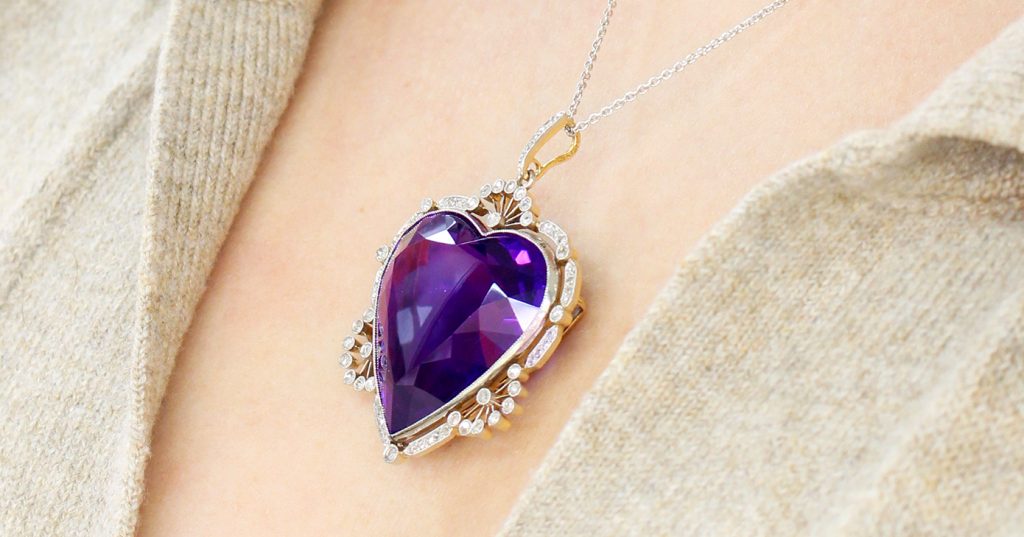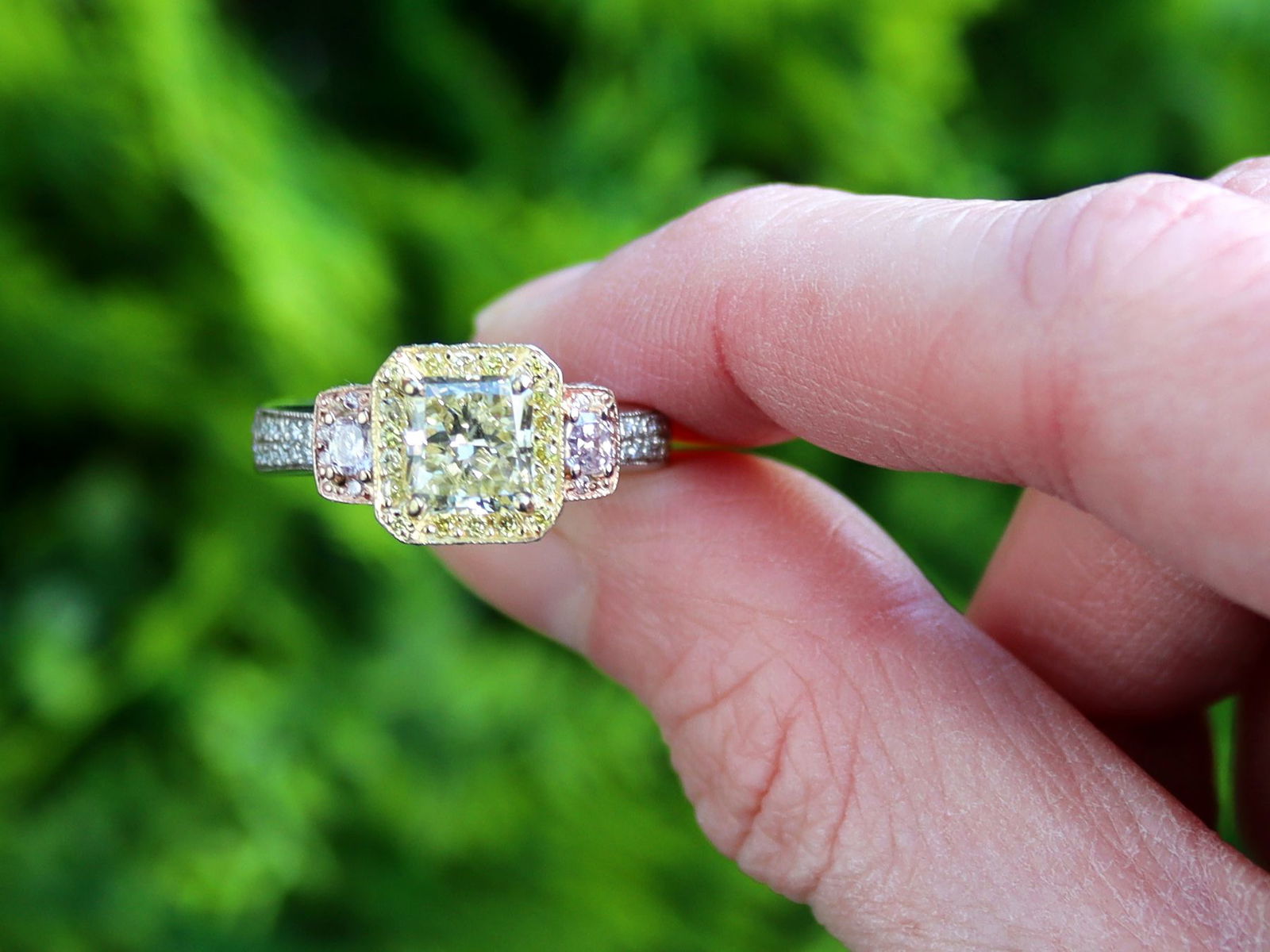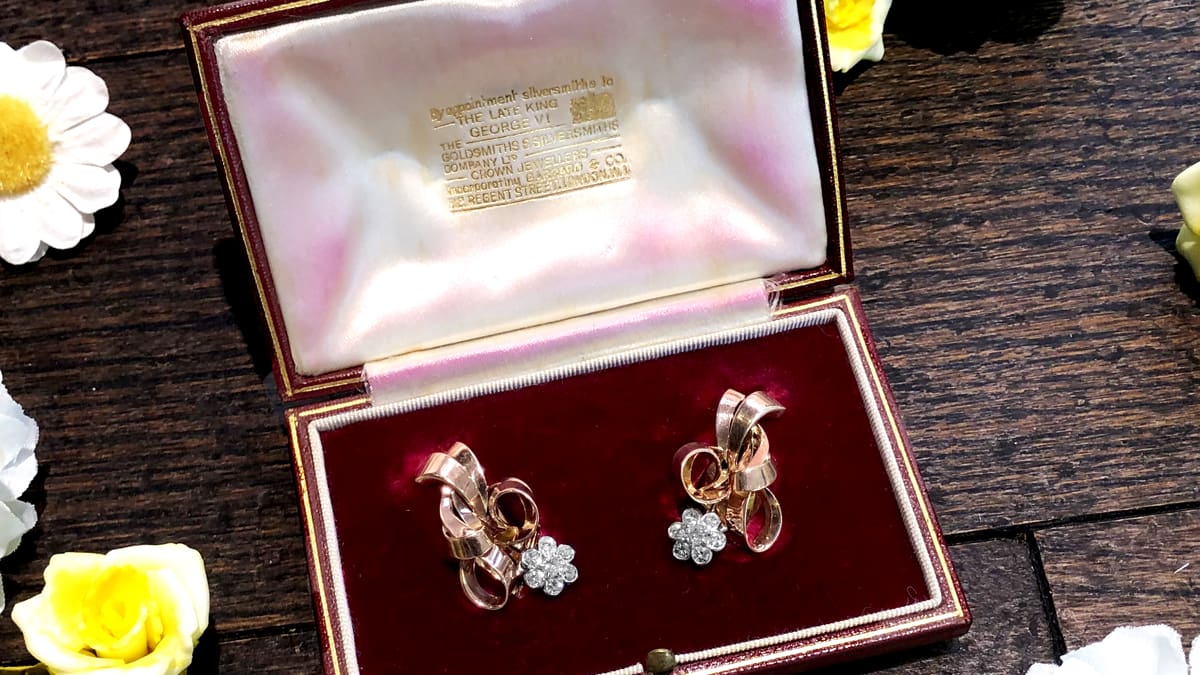Amethyst was once connected to the divine and the elite. The Greeks and Romans frequently fashioned it into talismans and ornate jewellery because they thought it had protective properties and could keep people from getting drunk.
By the Middle Ages, its deep purple hues were a favourite among kings and clergy because they represented purity. During the Renaissance and Georgian periods, amethyst was especially popular among European nobility, who wore it as a sign of wealth, intelligence, and divine favour.
Amethyst in Iconic Royal Collections
Catherine the Great’s Imperial Amethysts
The Russian empress was a renowned collector of amethyst jewellery. She commissioned elaborate pieces that showcased the gemstone’s vibrancy, pairing it with diamonds and other precious stones in ornate settings that epitomised regal opulence. Russian royals valued amethyst for both its beauty and mystical properties, and many pieces from this era featured extravagant multi-strand amethyst necklaces and tiaras.
The British Crown Jewels and Amethyst Adornments
Amethyst features prominently in the British royal collection, including amethyst brooches, necklaces, and tiaras. Queen Mary was particularly fond of amethyst and had a stunning parure featuring a necklace, brooches, and earrings, many of which were passed down through the generations. Additionally, The Kent Amethyst Parure, a collection of Victorian-era amethyst jewels, remains one of the most notable royal amethyst sets in Britain. Queen Elizabeth II has been seen wearing amethyst brooches and necklaces from this historic collection.
Napoleonic Era Amethysts
Joséphine Bonaparte, wife of Napoleon, adored amethyst and often wore pieces adorned with the gemstone, setting a trend for amethyst jewellery across Europe during the 19th century. One of the most famous examples of Napoleonic-era amethyst jewellery is the Swedish Napoleonic Amethyst Parure, originally owned by Joséphine and later passed down through the Swedish royal family. The set includes a tiara, necklace, earrings, and brooches, all featuring rich, deep-purple amethysts framed by diamonds.
The Duchess of Windsor’s Amethyst Jewels
A more modern royal figure, Wallis Simpson, the Duchess of Windsor, was known for her exquisite taste in jewellery. Among her collection was an eye-catching Cartier amethyst and turquoise necklace, a bold and unconventional Art Deco design that exemplified the creative experimentation of the era. This piece, auctioned after her death, remains a legendary example of how amethysts were incorporated into high jewellery design.
The Victorian and Edwardian Influence
The Victorian era saw a revival of sentimentality in jewellery, and amethyst became a favourite for its romantic associations and affordability compared to other precious stones. Victorian jewellery designs often featured amethysts in intricate floral motifs, delicate halos, and locket rings, embodying the era’s love of symbolic and ornate jewellery. Queen Victoria herself was known to wear amethysts, appreciating their rich hue and deep historical symbolism.
This trend carried into the Edwardian period, where the stone was set into platinum or white gold designs, emphasizing elegance and refinement.
A notable royal example from this era is Queen Alexandra’s amethyst and diamond necklace, which featured delicate Edwardian craftsmanship and showcased the period’s preference for intricate, lace-like settings. A modern homage to these historical designs can be seen in pieces like an amethyst and diamond dress ring, which captures vintage sophistication. Although crafted circa 1950, its design reflects the Victorian and Edwardian eras’ timeless charm. Featuring a vibrant amethyst surrounded by diamonds in an intricate white gold setting, this piece exemplifies how these historical styles continue to influence contemporary jewellery design.
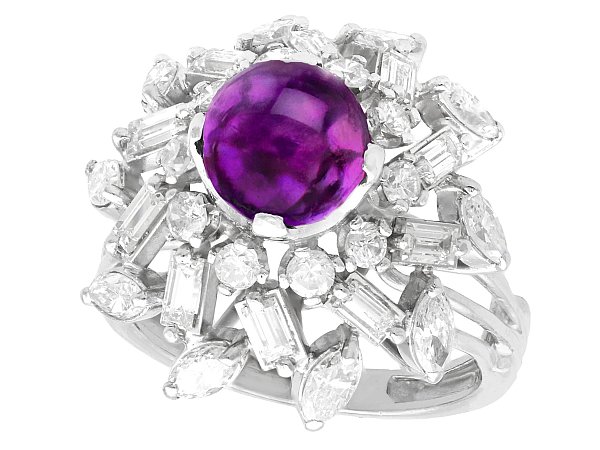
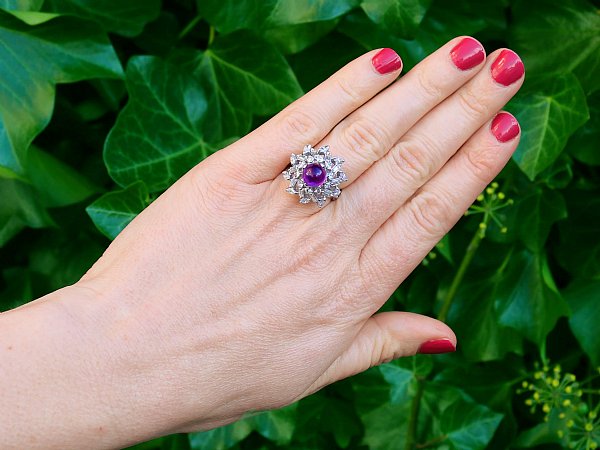
The Art Deco Era: A Modern Royal Legacy
By the 1920s and 1930s, the Art Deco movement redefined jewellery design with bold geometric shapes and vibrant colour contrasts. Amethyst played a significant role in this era, paired with diamonds, emeralds, and onyx to create striking pieces. Many antique amethyst rings from this time were inspired by the grandeur and sophistication associated with royal jewels, making them timeless symbols of luxury.
Royal connections to Art Deco amethyst jewellery are truly fascinating, with several stunning pieces that tell their own stories. Take, for instance, the Cartier Amethyst Suite of the Duchess of Windsor. This bold necklace isn’t just a beautiful accessory; it perfectly captures the essence of the Art Deco era, showcasing the striking lines and vibrant colours that define the period.
Then there’s the Amethyst Tiara of Queen Juliana of the Netherlands. This diadem isn’t just a piece of jewellery; it’s a symbol of royal elegance, often worn by various members of the Dutch royal family, each one adding their own unique touch to its legacy.
And let’s not forget the Amethyst and Diamond Parure of the Swedish Royal Family. This historic set is like a chameleon, having been restyled multiple times to keep up with the ever-changing fashion trends. It’s amazing how these pieces not only reflect the artistry of their time but also carry the weight of history and personal stories, connecting us to the lives of those who wore them. Each jewel sparkles with a sense of nostalgia and romance, reminding us that jewellery is more than just adornment; it’s a piece of art that tells a story across generations.
How Royal Jewellery Influences Today’s Antique Rings
The styles and motifs seen in royal amethyst jewellery collections continue to shape the design of antique and vintage rings. From the floral elegance of Victorian settings to the sleek, bold lines of Art Deco designs, these pieces offer a glimpse into the splendour of royal and noble tastes. Modern collectors appreciate antique amethyst rings for their historical significance and the intricate craftsmanship that echoes the grandeur of the past.
Owning a Piece of Regal History
Antique amethyst rings provide a unique opportunity to own a piece of jewellery inspired by royal traditions. Their timeless appeal and connection to noble history make them a meaningful addition to any collection. Whether set in the romantic filigree of the Victorian era or the striking symmetry of Art Deco, these rings capture the elegance and sophistication of centuries past.
The role of amethyst in royal and noble jewellery collections highlights its enduring allure as a gemstone of prestige and beauty. The influence of these regal designs can still be seen in the antique and vintage rings treasured today. By choosing an antique amethyst ring, you’re not only acquiring a stunning piece of jewellery but also a tangible link to the traditions of elegance and sophistication that have defined royalty for centuries.

